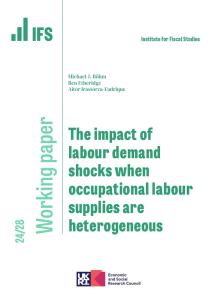The Green Budget 2012 was edited by Carl Emmerson, Paul Johnson and Helen Miller, and copy-edited by Judith Payne. It was produced in collaboration with Oxford Economics and with generous funding from the Economic and Social Research Council. | | |
1.1 Introduction
1.2 Global outlook
1.3 Risks to the global economy
1.4 Conclusions
2.1 Introduction
2.2 Double dip in 2012?
2.3 More favourable factors to help recovery next year
2.4 Medium-term recovery slower than usual
2.5 Comparison with other forecasts
2.6 Risks skewed to the downside: alternative scenarios for the UK economy
2.7 Conclusions
3.1 Introduction
3.2 The current state of the public finances and how we got here
3.3 Fixing the UK's public finances
3.4 The government's fiscal rules
3.5 International comparison of the UK's fiscal position and future plans
3.6 Risks to the public finances
3.7 Longer-term pressures
3.8 Conclusions
4.1 Introduction
4.2 IFS fiscal forecasts
4.3 Uncertainties around the central forecasts
4.4 The Budget judgement
5.1 Introduction
5.2 Public sector pensions
5.3 Public sector pay
5.4 Conclusions
6.1 Introduction
6.2 Spending by local government in 2009-10
6.3 Where have the cuts fallen since 2009-10?
6.4 Putting the cust in context
6.5 Conclusions
7.1 Introduction
7.2 UK ODA spending
7.3 Aid expenditure by DfID
7.4 International comparisons
7.5 Conclusions
8.1 Introduction
8.2 Welfare, output and growth
8.3 Principles of a good tax system
8.4 Reforming individual areas of the tax system
8.5 The tax mix
8.6 Conclusions
9.1 Introduction
9.2 Who pays the 50p rate?
9.3 How might the very rich respond to the 50p rate?
9.4 Evidence on how high-income individuals respond to tax changes
9.5 HM Treasury's estimate of the level of revenue raised
9.6 When will we know more about the revenue raised by the 50p tax rate?
9.7Conclusion
10.1 Introduction
10.2 The taxation of corporate income
10.3 The taxation of income from intellectual property
10.4 Devolution of corporate tax setting powers
10.5 Summary and conclusions
11.1 Introduction
11.2 The government's proposal for child benefit
11.3 Alternative ways of removing Child Benefit from better-off families with children
11.4 Summary and conclusions
Appendix A: Forecasting the public finances
Appendix B: Headline tax and benefit rates and thresholds
Appendix C: Abbreviations
© The Institute for Fiscal Studies, February 2012












